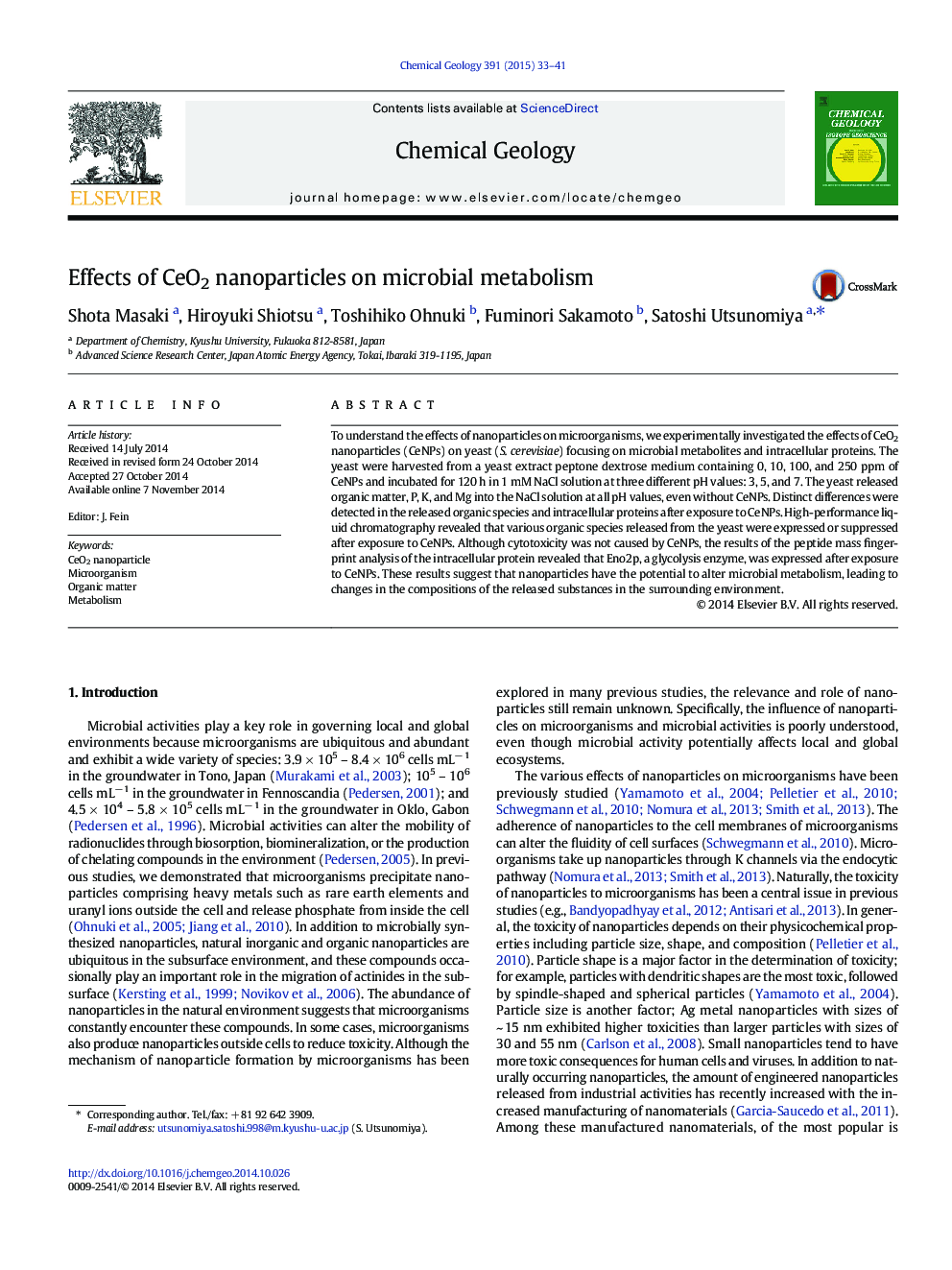| Article ID | Journal | Published Year | Pages | File Type |
|---|---|---|---|---|
| 4698620 | Chemical Geology | 2015 | 9 Pages |
•The effects of CeO2 nanoparticles on S. cerevisiae metabolism were investigated.•The relative amount of the released organic species changed by CeO2 nanoparticles.•ENO2p, a glycolysis enzyme, was expressed after exposure to CeO2 nanoparticles.•CeO2 nanoparticles caused alteration of microbial metabolism and metabolites.
To understand the effects of nanoparticles on microorganisms, we experimentally investigated the effects of CeO2 nanoparticles (CeNPs) on yeast (S. cerevisiae) focusing on microbial metabolites and intracellular proteins. The yeast were harvested from a yeast extract peptone dextrose medium containing 0, 10, 100, and 250 ppm of CeNPs and incubated for 120 h in 1 mM NaCl solution at three different pH values: 3, 5, and 7. The yeast released organic matter, P, K, and Mg into the NaCl solution at all pH values, even without CeNPs. Distinct differences were detected in the released organic species and intracellular proteins after exposure to CeNPs. High-performance liquid chromatography revealed that various organic species released from the yeast were expressed or suppressed after exposure to CeNPs. Although cytotoxicity was not caused by CeNPs, the results of the peptide mass fingerprint analysis of the intracellular protein revealed that Eno2p, a glycolysis enzyme, was expressed after exposure to CeNPs. These results suggest that nanoparticles have the potential to alter microbial metabolism, leading to changes in the compositions of the released substances in the surrounding environment.
